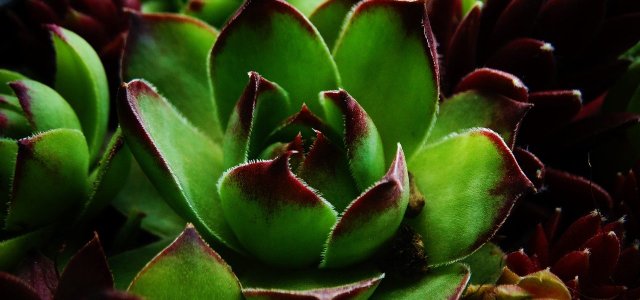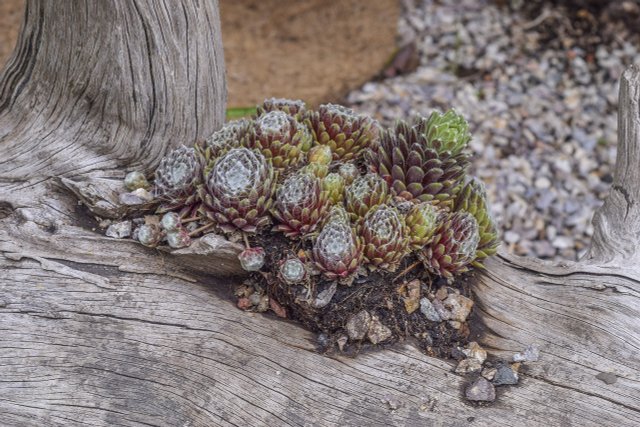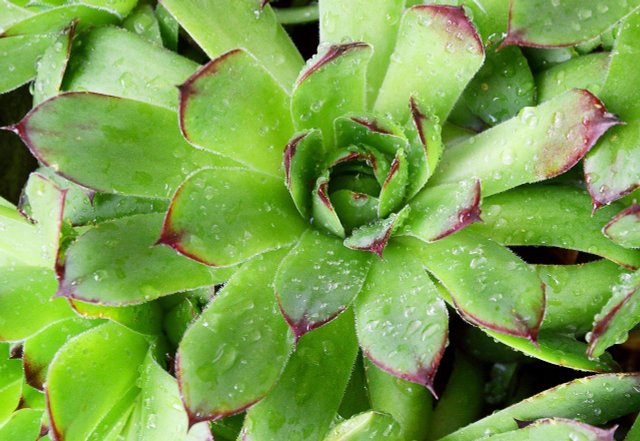
Thanks to its thick leaves, houseleek can easily withstand drought, heat and cold. That’s why you can use it to green roofs or beautify gravel paths, for example.
The houseleek or rock rose is suitable even for gardeners without a green thumb. Thanks to its thick leaves, the plant can withstand drought and heat as well as cold. Its Latin name “Sempervivum” also indicates its survivability – in European it means “always alive”.
In nature, the succulent is often found in rock crevices. You can use it to plant rock gardens, for example – but it also thrives in homes. The plant looks particularly good in a shallow planter.
There are countless varieties of houseleek, which differ in shape and color. Healing ointments are made from some of them. How these work and what you should pay attention to when planting, you will learn in the following text.
Contents
Planting and caring for houseleek

As frugal and robust as the houseleek is with its thick leaves, there are a few points you should keep in mind to ensure that the plant feels at home in your garden.
Location and soil:
- The houseleek feels most at home in sunny places.
- It makes hardly any demands on the soil and grows even where hardly any weeds thrive.
- Barren soil is best suited. The survival artist gets along very well with stones and gravel. The plant is even suitable for green roofs.
- Only with waterlogging Sempervivum does not cope. Therefore, the soil should be well-drained.
Planting rockrose:
- If you want to plant houseleeks in pots or bowls, the container should definitely have enough holes so that excess liquid can drain away. Additionally, a layer of gravel is recommended as drainage.
- Houseleeks hardly need any soil. Therefore, the planting hole hardly needs to be larger than the root ball of the plant.
- Since rock roses tend to grow taller, you can plant them close together and don’t have to worry about spacing between each plant.
- If you enrich the soil with some compost beforehand, the leaves will become more colorful. However, this is not necessary. If you add too much nutrients, the plants will even bloom less.
- You can also plant rock roses in small gaps, green roofs or window frames, or decorate walls with them. About one centimeter of soil at the base is enough for the plant.
- Moisten the soil afterwards so that the houseleek grows well. The soil should not be too wet.
Houseleek care:
- The houseleek hardly needs any nutrients. You do not need to fertilize it.
- It also needs little liquid. Only during long periods of drought or in pots should you water it occasionally. Make sure that the water does not get into the leaf rosette.
- In the wild, houseleeks are found mainly in mountainous areas. Therefore, regular cold periods are important for the plant. In the garden it can survive very cold winters and keeps its leaves all year round. If you plant rock roses indoors, you should move them outside or into a cool room, such as a cellar, during the cold months.
Sempervivum as a medicinal plant

Houseleek is popular not only among gardeners, but also in herbal medicine. For example, there are numerous ointments made from the leaves of the “Sempervivum” plant for sale. These are said to help with swelling, stings and sunburn, among other things.
In 2019, a study discovered evidence that components of houseleek can help heal wounds. Other studies suggest antioxidant effects of the plant, among other things

